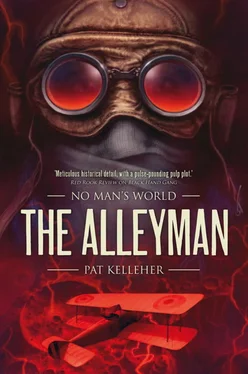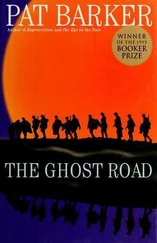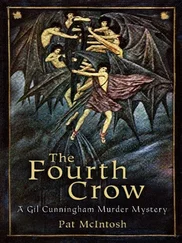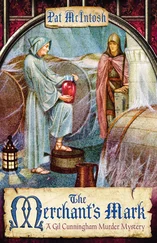Pat Kelleher
THE ALLEYMAN
“When ants unite, they can skin a lion.”
– Iranian proverb
13 thBATTALION PENNINE FUSILIERS: COMPANY PERSONNEL
Battalion HQ.
C.O.:2 ndLieutenant J. C. Everson
2C.O.:Sergeant Herbert Gerald Hobson
Company Quartermaster Sergeant Archibald Slacke
Pte. Henry ‘Half Pint’ Nicholls (batman)
Royal Army Chaplain: Father Arthur Rand (CF4) (‘Captain’)
War Office Kinematographer Oliver Hepton
Signals
Corporal Arthur Riley
Pte. Peter Buckley
Pte. Richard Tonkins
‘C’ Company
No 1 Platoon
C.O.:Lieutenant Morgan
No. 2 Platoon
C.O.:2 ndLieutenant Palmer
1 Section
I.C.:Lance Corporal Thomas ‘Only’ Atkins
Pte. Harold ‘Gutsy’ Blood
Pte. Wilfred Joseph ‘Mercy’ Evans
Pte. George ‘Porgy’ Hopkiss
Pte. Leonard ‘Pot-Shot’ Jellicoe
Pte. David Samuel ‘Gazette’ Otterthwaite
RAMC
Regimental Aid Post
RMO:Captain Grenville Lippett
Red Cross Nurses
Sister Betty Fenton
Sister Edith Bell
Driver Nellie Abbott (First Aid Nursing Yeomanry)
Orderlies
Pte. Edgar Stanton
Pte. Edward Thompkins
Stretcher Bearer
Pte. Jenkins
Machine Gun Corps (Heavy Section) ‘I’ Company: I-5 HMLS Ivanhoe
C.O.:2 ndLieutenant Arthur Alexander Mathers
Pte. Wally Clegg (Driver)
Pte. Alfred Perkins (Gearsman)
Pte. Norman Bainbridge (Gunner)
Pte. Jack Tanner (Gunner)
Pte. Reginald Lloyd (Loader/ Machine Gunner)
Pte. Cecil Nesbit (Loader / Machine Gunner)
D Flight 70 Squadron: Sopwith 1 ½ Strutter
Lieutenant James Robert Tulliver (Pilot)
Corporal Jack Maddocks (Observer)

PREFACE
“Keep the Home Fires Burning…”
The British Official History of the Great War, Military Operations: France and Belgium, 1916 Volume II (1938) simply states that on the 1 stNovember 1916, the nine hundred men of 13 thBattalion of the Pennine Fusiliers went over the top at dawn to attack a German position in Harcourt Wood on the Somme. They advanced into a gas cloud and vanished, leaving a crater nearly half a mile wide and eighty feet deep. The official explanation was a mass explosion of German mines dug under the British positions using an experimental high explosive. This is still the official position.
And it would have remained that way, had not a chance find in a French field by a farmer, ten years later, sparked a controversy that exists to this day and led to the one of the greatest mysteries of the First World War.
Known as the Lefeuvre Find, it contained several rusted film canisters of undeveloped silver nitrate film, along with, amongst other things, journals, letters, keepsakes, notes and what purported to be the Battalion War Diary. When developed, the black and white silent film – believed to have been shot by Oliver Hepton, a War Office kinematographer who had been assigned to film the attack – showed the Pennines apparently alive and well and on an alien world.
The film was dismissed by the Government as a hoax, playing on the hopes of the relatives and loved ones of those missing. However, there were those who believed its provenance and campaigned for the truth. Some of their descendants still do.
It became clear from the items recovered in the Lefeuvre Find that there were other casualties of the Harcourt Event, and that the phenomenon even extended up into the atmosphere. The Hepton footage (HF232) shows a member of the Royal Flying Corps, who has since been identified as Lieutenant James Tulliver, who was presumed to have been shot down and killed and whose body and plane wreckage were never found.
The First World War was one of the first truly technological wars, where industrialisation changed the nature of warfare. Manned flight was barely ten years old at the outbreak of the war, and within months, it was being used to kill. The war in the air developed into an arms race, with technological advances rendering machines and engine designs obsolete within months, as the push for advantages in speed, height and manoeuvrability drove huge leaps in innovation.
To those at home, the war in the air was a romantic notion that the RFC fostered. It seemed like an echo of a previous age, of chivalrous knights duelling in single combat. The mixture of romance, adventure and technology caught the public imagination, and many adventure story magazines of the time featured tales of derring-do in the air. None more so than Great War Science Stories, which featured a series of highly colourful pulp tales about Tulliver, Ace of the Alien Skies as he battled everything from flying dinosaurs to robotic sky pirates until the magazine ceased publication in 1932.
This third volume of the No Man’s World series continues the account of the Pennine Fusiliers’ true fate. It is based on the accounts of those who were there, where possible, although some events are inferred. All major events have been drawn from primary sources, including the papers of Arthur Cooke, author of The Harcourt Crater: Hoax or Horror, personal letters, and entries from the Battalion War Diary, as well as from the Flight Log of Lieutenant James Tulliver. This is now in the hands of a private collector in Australia, who wishes to remain anonymous but for the truth to be known.
1 stNovember 2016 will see the one-hundredth anniversary of the disappearance of the Pennines. Renewed interest in the fate of the Broughtonthwaite Mates is constantly bringing new evidence and facts to light and so, while their hometown of Broughtonthwaite prepares to commemorate the centenary of the Heroes of Harcourt, we may yet finally discover the true fate of the Pennine Fusiliers.
Pat Kelleher
Broughtonshaw Easter, 2012

PROLOGUE
“They Told Me He Had Gone That Way…”
THE GREAT BATRACHIAN ironclad tumbled into the crater, its tracks gouging broad ruts as it slid down the steep slope towards the tangle of alien jungle below. Poisonous barbed vines lashed its ironbound hide as the Ivanhoe ploughed through them, ripping them out at the roots and dragging them along with it.
Trills, howls, roars and whoops of alarm reached a crescendo as the intruder blundered through the undergrowth.
The great steering tail broke free and tumbled through the jungle on its own lazy trajectory, spewing hydraulic fluid as it spun.
The Ivanhoe plunged on, every impact slowing its momentum, the ironclad only coming to a halt as it collided with the buttress root of a huge trunk with a thunderous, hollow thud .
Overhead, the canopy thrashed as startled creatures bolted in terror and a tense silence descended. The jungle seemed to pause.
No predatory growl rose from the intruder to challenge them.
Half hidden by the dappled shade and torn foliage, the intruder clicked and groaned. Large leafy fronds sprouted from its tracks, caught in the track wheels. Shredded leaves and broken boughs lay strewn over its hull. The drivers’ visors hung shut and the ironclad’s great guns lay listless and bowed.
Читать дальше













